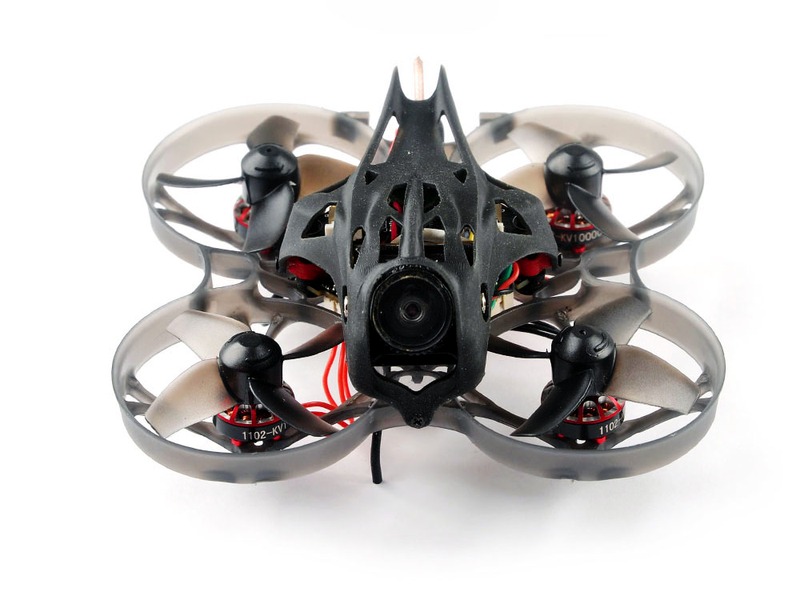Why is flying FPV so hard?

Flying FPV (First Person View) is a type of drone flying that requires the pilot to control the drone from a first-person perspective, using a camera mounted on the drone. This type of flying is considered to be one of the most challenging and difficult forms of drone flying, and there are a few reasons why.
First, FPV flying requires a great deal of skill and practice. Unlike traditional drone flying, where the pilot can see the drone from a distance, FPV flying requires the pilot to control the drone from the perspective of the camera. This means that the pilot must be able to accurately interpret the video feed from the camera in order to control the drone. This requires a great deal of practice and skill, as the pilot must be able to accurately judge the speed and direction of the drone in order to avoid obstacles and maintain control.
Second, FPV flying requires a great deal of concentration and focus. Unlike traditional drone flying, where the pilot can take breaks and relax, FPV flying requires the pilot to remain focused and alert at all times. This is because the pilot must be able to accurately interpret the video feed from the camera in order to control the drone. This requires a great deal of concentration and focus, as the pilot must be able to accurately judge the speed and direction of the drone in order to avoid obstacles and maintain control.
Third, FPV flying requires a great deal of knowledge and understanding of the drone and its components. Unlike traditional drone flying, where the pilot can simply fly the drone without any knowledge of its components, FPV flying requires the pilot to understand the components of the drone in order to control it accurately. This includes understanding the camera, the motors, the flight controller, and the other components of the drone.
Finally, FPV flying requires a great deal of patience and dedication. Unlike traditional drone flying, where the pilot can simply fly the drone without any patience or dedication, FPV flying requires the pilot to be patient and dedicated in order to master the skill. This is because the pilot must be able to accurately interpret the video feed from the camera in order to control the drone. This requires a great deal of patience and dedication, as the pilot must be able to accurately judge the speed and direction of the drone in order to avoid obstacles and maintain control.
In conclusion, FPV flying is one of the most challenging and difficult forms of drone flying. This is because it requires a great deal of skill, concentration, knowledge, and patience in order to master the skill. As such, it is important for pilots to understand the challenges associated with FPV flying in order to be successful.
Comments / Question
2. Radio interference: Radio interference from other sources can interfere with the signal between the drone and the controller, resulting in a poor flight experience.
3. Drone type: Different types of drones have different capabilities and features, which can affect the quality of the flight experience.
4. Battery life: The battery life of the drone can affect the length of the flight and the quality of the experience.
5. Propeller size: The size of the propellers can affect the speed and maneuverability of the drone, which can affect the quality of the flight experience.
6. Camera quality: The quality of the camera can affect the quality of the video feed, which can affect the overall flight experience.
2. Always fly within the legal limits for altitude, distance and duration.
3. Always fly within your sight and keep the aircraft within a distance that you are able to keep visual line of sight.
4. Use an approved frequency and do not interfere with other aircraft communications.
5. Be aware of any potential interference that may cause you to lose control of your aircraft.
6. Have a spotter with you at all times, who can both see the aircraft and monitor the video feed.
7. Make sure that your aircraft is properly maintained and inspected before each flight.
8. Wear the appropriate safety gear and make sure the environment is safe.
9. Fly within your abilities and don’t try to do anything you are not sure of.
10. Make sure you have a plan for what to do in case of an emergency or unexpected situation.
2. Understanding the components: FPV flying requires a good understanding of the components of the system, such as the transmitter, receiver, camera, and video goggles.
3. Setting up the system: Setting up the FPV system correctly is essential for successful flying. This includes understanding the frequency settings, the power settings, and the orientation of the antennas.
4. Learning to fly with FPV: Learning to fly with FPV can be difficult as it requires a good understanding of the controls and how to interpret the video feed from the camera.
5. Managing the risks: Flying FPV can be risky and requires a good understanding of the risks involved and how to mitigate them. This includes understanding the legal regulations in your area, the potential for interference, and the potential for crashing.
2. Interference: Radio interference can be a major issue when flying FPV. This can cause your drone to lose connection with the controller, or even crash.
3. Weather: Weather can be a major factor when flying FPV. Wind, rain, and other weather conditions can make it difficult to fly and control your drone.
4. Battery Life: Battery life is an important factor when flying FPV. You need to make sure that your drone has enough battery life to complete the flight.
5. Regulations: Depending on where you are flying, there may be regulations that you need to follow. Make sure to check the local laws and regulations before flying.

